In early 2020, the introduction of COVID-19 in the MENA region found its epicenter in Iran. The country’s outbreak preceded much of the rest of the world, and during the outset of the crisis the Iranian government’s slow reaction and delayed quarantines ignited ridicule internationally. Online and offline misinformation were part of the country’s battle with the virus. In this chapter, we highlight three main aspects that have shaped the spread of coronavirus misinformation in Iran; a) the lack of public trust in officials, b) religiously charged narratives by unofficial fringe figures, c) political manipulation of the discourse around the virus. We end this chapter by focusing on the counter measures implemented and the limitations that enabled the dissemination of the misleading content.
Trust Crisis in Iran
Political Turbulence and Trust
In the months leading up to the COVID-19 crisis in Iran, there was an increase in distrust in Iran’s official institutions. Following November 2019 protests that resulted in what is suspected to have been thousands of deaths, Iran’s Revolutionary Guards, the country’s wide-reaching military corps[1], and the (semi) elected Iranian government faced a crisis of legitimacy. In addition, the downing and the subsequent coverup of the Ukraine Airlines passenger jet in January 2020 by the Guards led to a new round of protests (Behravesh, Jan. 14, 2020).
As COVID-19 began to take hold in the country, the Supreme Leader Ayatollah Khamenei, President Rouhani, the Ministry of Health and other officials initially played down the pandemic, in fear that the virus would lower voter turnout for the country’s February election (BBC Persian, Feb. 25, 2020). Less reported in the media are the other issues and events that have eroded public trust against these authorities throughout the pandemic: Channels affiliated to the Revolutionary Guards and state affiliated news channels promoted conspiracy theories about the virus’s origins. Masaf Institute for example, a cultural and economic institution affiliated with Revolutionary Guard under the leadership of a well-known and cult-like conspiracy theorist, Ali Akbar Raefipour, stood out amongst these channels. They used their “health” Telegram channel called @masaf_salam as well as it’s main channel @masaf, to promote a wide range of conspiracies about the origins of the virus. Other accounts belonging or affiliated with the Revolutionary Guards such @afsaran_ir, @sepah_cyberi, @sepahcyberi were also actors promoting such theories. However, they further dramatized and promoted conspiracy theories that were being promoted in Iran’s official media regarding the virus as an attack by the US against Iran.
While political information worked to divide and blame the origins of the virus, influential channels on the popular messaging service Telegram, even some associated with hardline and traditional institutions such as the Revolutionary Guards, were providing credible information by at least, 29 February, asking followers to follow social distancing measures and sharing videos of medical staff asking Iranians to stay home to save lives.
Religious Figures Fill Trust Vacuum
Our analysis of social media found examples of religiously-charged COVID-19 messages promoted in India, the US, and MENA countries such as Iran. It is the latter that we focus on in this report. There is no doubt that Islam prohibts the spreading of unverified information, gossipes, and rumours[2]. Yet, with a deficit of public trust in authorities, opportunities for information sharing have been allocated to unqualified actors, most significantly, clerics and religious figures.
In Iran, where some Shiite Muslim religious figures often use their faith as a pillar of opposition against westernization, a fringe figure named Ayatollah Abbas Tabrizian has come to be known as “the father of Islamic medicine.” Prior to the outbreak of COVID-19, Tabrizian posted a video in January of himself burning a copy of Harrison’s Principles of Internal Medicine, an American reference textbook of medicine used globally. Tabrizian accused the book of being “a tool of the West’s infiltration of other countries” in a video sermon posted to his Telegram channel.
Those who follow Tabrizian’s thinking against modern medicine are known to refuse to vaccinate, or follow medical advice, for major illnesses including cancer diagnoses (Faghihi, Mar. 10, 2020). On 25 February, as the coronavirus crisis unfolded in Iran, Tabrizian advised followers infected with the virus to swab their anus’ with a piece of cotton dipped in violet oil (See Figure 1). The post has gone viral on his Telegram channel of over 200,000 followers and beyond onto other Persian language social media, with mixed reactions that included both ridicule and adherence to Tabrizian’s messaging.

Another controversial video that circulated across Persian language social media shows Mortazavi Kohsal, known to be a disciple of Ayatollah Tabrizian (Saeedian, Mar. 23, 2020; Bahar News, Mar. 23, 2020). As he claims to practice Islamic medicine, Kohsal visits critically ill and quarantined coronavirus patients, while wearing no protective clothes or gear, to rub a liquid he claimed to be “the perfume of the Prophet” on the patients lips in the city of Anzali in Gilan. Two days later, one of the young patients Kohsal rubbed the perfume died from the virus (Bahar News, Mar. 23, 2020).
Mehdi Sabili, another follower of Tabrizian, similarly circulated a viral video recommending camel urine as a coronavirus remedy. Authorities arrested himfor creating “confusion and anxiety” for the public, and undermining the countries “Islamic and medicinal values” in addition to running a Islamic Medicine clinic in Tehran without a license (YJC, Apr. 22, 2020).
Protection for Religious Misinformers
Criticisms against these actors and their contribution to fatal dangers within the Iranian establishment are aplenty (Radio Farda, Dec. 29, 2020). However the phenomenon remains protected from official reproach through Tabrizian’s entrenched networks amongst Iran’s clerical elite. While two of Tabrizian’s disciples have been arrested after causing outrage in both internal Iranian and international media, Tabrizian has been left untouched. His honorific title of “Ayatollah” has never been questioned for removal by Iran’s Shiite seminaries (YJC, Apr. 23, 2020)[3].
In February 2020, three Iranian doctors who condemned Tabrizian’s medical advice were sentenced to flogging in the city of Mashhad (Asr Iran, Feb. 9, 2020)[4]. While the doctors were later acquitted, these arrests highlight Tabrizian’s influence with authorities. Furthermore, a journalist running the Telegram channel for the semi-official Iranian Labour News Agency (ILNA) was arrested on 23 April for posting a satirical cartoon of Tabrizian and his suggested coronavirus remedies on the basis of insulting the Supreme Leader Khamenei. The cartoon depicted Khamenei as a nurse asking for silence as he allows for remedies to be applied to a coronavirus patient (RFE/RL, Apr. 28, 2020). Popular platforms such as the Iranian alternative to YouTube, Aparat, that strictly adhere to Iran’s censorship regulations (Center for Human Rights in Iran, Nov. 29, 2017) leaves the official pages for Tabrizian prescribing and promoting remedies unchecked (see the page for Tabrizian’s archive of speeches here, and his office’s official channel here).
Religious authorities also falsely believed sacred protection would prevent the virus from spreading in religious shrines, and resistance to closing down the religious shrines in the city of Qom, where the virus had its first outbreak in Iran, was a contributing factor to the spread of the disease (Batrawy, Feb. 25, 2020). However, as the pandemic has carried on for a few months, some clerical figures, especially in Qom, have come to be seen as community leaders in guiding public health on good advice (Bozorgmehr, Jun. 17, 2020).
Despite many authorities condemning “religious misinformation”, it was still a phenomenon that contributed to Iran’s infodemic. The combination of communications platforms allowing for wider audiences for fanatical solutions have contributed to the reach and impact of dangerous ideas and remedies. Politically, the spread of the virus from a holy Shiite centre such as Qom has fueled the existing sectarian tensions within the Gulf region and Lebanon. Scapegoating problems of coronavirus to Shiite Islam has contributed to eroding civil rights against already persecuted minority Shiite communities in Saudi Arabia and Bahrain (Matthiesen, Mar. 23, 2020).
The Alcohol Epidemic Within the Pandemic: Not Part of the Online Infodemic
To date, over 300 Iranians have died and another 1,000 were poisoned by alcohol during the pandemic (Karimi and Gambrell, Mar. 27, 2020). Contrary to some sources promoted by foriegn media, this was not a problem found in the “online infodemic.[5]” Alcohol related deaths have long been a problem in Iran. Conditions of the lockdown have just exacerbated it.
As an Islamic theocracy, alcohol is banned in the country but still widely consumed. Iranians have different ways of acquiring alcohol. There are alcohol dealers that sell various imported alcoholic drinks, typically at very high prices. A cheaper alternative, however, is making the alcohol at home or purchasing alcohol distilled in illegal local workshops. The latter options are often the source of poorly made distillations that lead to methanol poisoning. In fact, alcohol related deaths due to these poisonous distillations have long been a public health crisis in Iran, well before the introduction of the coronavirus (Hekmat et al 2012). Alcohol poisoning has increased during the pandemic as more people have been looking to occupy their time at home by drinking; falsely interpreting alcohol consumption as a coronavirus disinfectant or remedy; and an increase in dealers selling poisonous alcohol (Hamshari Online, Mar. 14 2020). This, combined with Iran’s existing issues of trust and access to information factors surrounding the virus in Iran have intensified into a record amount of deaths.
The Role of Geopolitics in Misinformation
Conspiracy Theories
Political leaders in Iran have spread conspiracy theories that accuse other countries of spreading the virus. High ranking officials of the Iranian Revolutionary Guards Corps (IRGC), as well as the Supreme Leader Ayatollah Khamenei have spread the conspiracy theory that coronavirus is part of an American led bio attack against Iran within the country’s officialdom (Haghdoost and Motevalli, Mar. 12, 2020).
While some unofficial religious leaders promoted remedies, Iranian officials promoted fake virus testing technologies, making a mockery of the states efforts to combat the deadly virus. In what seemed like a show, the IRGC unveiled what was advertised as a “coronavirus remote detector” that could locate people infected within a 100 meters range. News about the unveiling ceremony on the 15th of April was published throughout Iran’s press and spread throughout international media. Links about this poorly-designed public diplomacy/propaganda attempt have circulated on Twitter for its “scientific capacity” (see Figure2).

Information Controls
One argument about international coverage of the coronavirus in Iran however, is that Iran’s place as a “bad actor” or “pariah” state within the world, especially as a force countering U.S hegemony in the Middle East, has led to unbalanced reporting on the situation of the virus in Iran. As one of the first countries hit by the virus, analysis of Iran’s inadequate response was perceived as a shocking and singular demonstration of Iran’s incompetence. However, as the virus became a pandemic overtaking almost every country in the world, it became evident incompetence and inadequacy were not singular to Iran. Many advanced democracies struggled just as Iran did. This imbalance in foreign media coverage further exasperated confusions in what trusted sources could be. Authorities made an extra effort to tarnish the work of foreign media coverage of the virus in Iran as malicious. In May. President Rouhani announced foreign media purposely manipulated news of the virus to “close down our country” (IRNA News, May. 16, 2020).
Nevertheless, manipulation campaigns have been tied to Iran. The “International Union of Virtual Media” (IUVM) has been uncovered as an influence campaign tied to Iran by researchers at Graphika, FireEye, and Facebook (Graphika, Apr. 14, 2020). On 28 February BBC Persian published a whistleblower report that proved the number of deaths in Iran far exceeded the government reports (BBC, Feb. 28, 2020). Shortly afterwards IUVM TV ran a smear campaign calling BBC Persian reporting a British conspiracy to undermine Iranian authorities (see figure 3).

Geopolitical warfare over controlling the coronavirus narrative continues alongside the censorship of major social media platforms, including Twitter, Facebook, YouTube, Telegram and major international media outlets such as BBC Persian. This has helped place hurdles on access to trusted information, especially pertinent during the start of the spread of the virus.
Prior to the country’s parliamentary elections information sources about the virus were scarce if not only on censored platforms. However, the government denied the arrival of the virus as “disinformation” being spread through social media (BBC Persian, Feb. 16 2020).
Fear of contradicting the government has also stopped many Iranians from sharing information online. There have been a number of arrests of medical workers exposing the true extent of the medical catastrophe (ARTICLE19, Mar. 27, 2020). Some criticism of the government’s public health responses led to high profile arrests, such as Shiraz City Councillor Mehdi Hajati, who on his Twitter account criticized authorities that did not quarantine Qom as the enemy of the people.
In many addresses to the nation President Rouhani has warned of a coronavirus infodemic (Tasnim, Mar. 14, 2020). While figures such as Tabrizian have been exempt, authorities have been known to crack down on those criticizing the states as opposed to actors producing dangerous misinformation.
Counter-Measures
While misinformation is circulated, counter-measures were barely implemented in the MENA region. Old coercive methods have been imposed, like arrests. MENA governments have launched more “threats” to those who spread rumours – or anything that contradicts the official news – on social media in relation to coronavirus, accusing them of affecting the public order.Coronavirus “misinformation” has become another reason to put more people behind bars in this region. There have been a number of arrests in Iran due to spreading “misinformation” on social media. To enforce that, the Iranian government created a task force to combat “misinformation” and “the spread of fear” leading to at least 24 arrests (ARTICLE19, Mar. 27. 2020). While official measures did not help counter the spread of misinformation, measures implemented by social media platforms did not seem to help either.
Social Media Platforms and Misinformation
Social media use in Western contexts are mainly dominated by platforms owned by Google, Facebook and Twitter. Although they operate imperfectly, there have been channels for criticism and accountability for the policies and decisions these companies take for fighting misinformation by civil society and governments. Within the Iranian context, the platforms used are more complex. According to a 2019 poll done by the Islamic Student Polling Agency, the top three most used social media applications (not including streaming platforms) are WhatsApp, Telegram and Instagram (in that order of popularity) (ISPA, Apr. 30, 2019). Iran’s Alexa ranking for websites also lists the local video streaming platform Aparat as the second most visited website in Iran .
What is emblematic of Iran’s information spaces are the lack of oversight that can be afforded to flag or remove false information. Viral news stories or videos forwarded in private chats or WhatsApp groups have become an emblem of COVID19’s Iranian infodemic. As researchers, this phenomenon is hard to track and trace across WhatsApp beyond interviews done with Iranians. In terms of oversight of the virality of false information on the platform, WhatsApp has struggled to find solutions. These struggles are naturally inherent in the nature of the platform as a private and encrypted messaging[6].
As the second most popular social media platform in Iran, Telegram’s major role lies in its public channels, which have been a platform for false information during the coronavirus pandemic. Content moderation policies on Telegram are notoriously more lax and subject to fewer accountability oversight mechanisms. This might be a product of how niche its social media function is within only certain communities or countries. However, as the “infodemic” within the coronavirus pandemic has become a global issue of universal relevance in almost every community and country, Telegram introduced a system to verify its channels in April in order to fight against dangerous coronavirus mis/disinformation[7].
Misinformation Mitigation in Iran
Throughout the coronavirus pandemic, problematic channels such as that of Ayatollah Tabrizian’s, propagating false remedies according to the dictates of his own school of “Islamic Medicine” have circulated unchecked. However, many channels affiliated with authorities did publish legitimate information that might have been ignored due to the crisis of legitimacy that exists between citizens and authorities.
In an official attempt to raise awareness, the Iranian government raised concerns about coronavirus misinformation as an issue mainly from “enemies.” Before official orders were given to lockdown public spaces, businesses, and restaurants in Iran, President Rouhani indicated “it is the conspiracy of our enemies to create fear to shut down our country” (BBC Persian, Feb. 25, 2020). Instead of promoting media literacy in the country, the government flagged these warnings to further cement the theory of “western influence” in creating or worsening the situation or to deflect from government criticism. While official efforts were lacking to counter the spread of misleading information in Iran, independent fact-checking efforts were also lacking.
Independent Fact-Checking
The MENA region, in general, lacks fact-checking efforts. Only a few local fact checkers work on countering Arabic and Persian misinformation in relation to coronavirus at the time of writing. AFP Factual and Fatabyyano are among those few entities that run coronavirus fact checking efforts, and act as the official Facebook third-party fact checkers in the region (See more on Google Fact Check Tools and IFCN). Others, in a less formal way, run fact-checking efforts like Verify-Syria, Factnameh, Matsda2sh, and Misbar – all are currently focusing on coronavirus fact-checking. BBC Monitoring has done some work to dispel misinformation on Persian social media, however their analyses are only in the English language (Sardarizadeh, Feb. 29, 2020).
However, this region lacks fact-checking efforts, social media platforms have also never prioritized collaborating with third-party fact checkers in the region.To this date, Facebook, for example, has only two partners that cover the entire MENA region (Elswah & Howard, Mar. 29, 2020). While social media platforms have spent resources in directing their users to accurate coronavirus-information in the MENA region, a lot still needs to be done, including developing their algorithms, content moderation, and fact-checking.
Conclusions
The world is currently witnessing an unprecedented challenge that threatens people’s lives. The MENA region has long been suffering from other problems like illiteracy, corruption, and authoritarianism. Coronavirus has added one more challenge to this region’s unprepared governments. In this short report, we presented how coronavirus has been used for religious and political polarization. While we focused our attention on Iran -the epicenter of the virus in the region- there are systemic issues that plague the information environment in Iran that are reflected into the rest of the region. From issues of unofficial religious actors, lack of trust in authorities, and political polarisations.
While Islam encourages Muslims to verify information and prohibit its followers from misleading others, some unofficial religious figures used their authority and connections to the political elite to mislead their communities and have remained unpenalized. Religious misinformation has had the ability to further politicize government responses to this pandemic. From shifting government accountability about appropriate measures to quarantine epicentres, to using excuses to persecute religious minorities in Saudi Arabia and Bahrain. Politicization of the pandemic across geopolitical tensions has been a particular highlight in the spread of misinformation from officialdom across the MENA region.
Conspiracy theories about American bio-attacks against Iran have led to pressure to go as far as to stop Doctors Without Borders from setting up and manning a hospital in the city of Isfahan as a continuation of long-standing projects in Iran and coordinated with the country’s Ministry of Health (MSF, Mar. 24, 2020; Motevalli, Mar. 24, 2020). Information control practices such as internet censorship and arrests of critics of the government has further added to the deficit in public trust against governments in this region. This has exacerbated the spread of misinformation, leading to hundreds of fatalities.
While the MENA region has not monopolized examples of coronavirus misinformation, the examples we outlined above highlight the deeper problems of authoritarianism, literacy (or digital literacy), sectarian tensions, and geopolitical conflicts that are worsening what should be a region united—in terms of nations, regions, and religions—against a global pandemic that knows no borders.
We collaborated with 53 partner organizations worldwide to design and carry out our 2024 elections projects. We extend special gratitude to our lead partners in Brazil, Mexico and Pakistan, whose work we highlight in this essay.
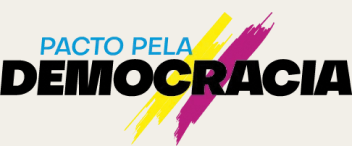
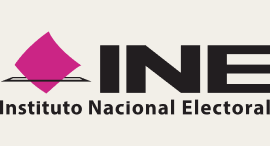
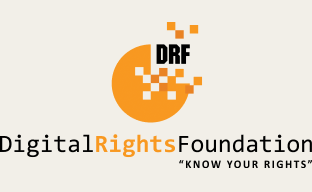
The 2024 elections projects featured in here would not have been possible without the generous support of these funders.
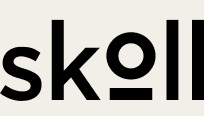


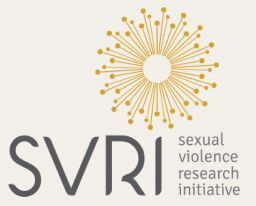
Footnotes
- The Revolutionary Guards are a separate military force from Iran’s national military, tasked with protecting the Islamic Revolution.
- In the Quran, spreading unverified information is prohibited: “O ye who believe! If a wicked person comes to you with any news, ascertain the truth, lest ye harm people unwittingly, and afterwards become full of repentance for what ye have done” (Quran: 49: 6)
- Ayatollah is an honorific title for high ranking Shiite clerics. Iran’s clerical government and Shiite seminaries have previously stripped clerics with the title of “Ayatollah” for political reasons that criticized the Islamic Republic’s system (Sherril 2018).
- A judge later acquitted all three of the charges on 22 April.
- UK tabloids falsely claim the story of the British man’s use of Whisky while he had coronavirus became viral misinformation in Iran leading to alcohol poisoning. After our own search of Persian social media, there is no little evidence this was a widely shared or impactful piece of news in Persian social media. Other news sources such as the Independent and the Associated Press have also promoted the false theory that the increase in alcohol deaths is because of “fake remedies spread across social media in Iran”.
- On April 7 2020 WhatsApp announced it was restricting the number of people users could forwarded messages to in order to slow the spread of coronavirus misinformation.
- On April 3, 2020 Telegram introduced its channel verification procedures.
References
- ARTICLE19. 2020. “Iran: Coronavirus Crisis Highlights Need for the Free Flow of Information.” ARTICLE 19. March 27, 2020.
- Asr Iran. 2020. ‘The Announcement of Mashad’s Medical Society on the Conviction of 3 Doctors for Insult to Tabrizian’. عصر ايران. World. 9 February 2020.
- Bahar News. 2020. “The Death of a Young Citizen of Anzali After a Visit from Kohsal!” پایگاه خبری بهار نیوز. March 23, 2020.
- BBC News. 2013. “Sunnis and Shia in the Middle East.” Accessed March 29, 2020.
- BBC. 2020. ‘Coronavirus Kills 210 in Iran - Hospital Sources’. BBC News, 28 February 2020, sec. Middle East.
- BBC Persian. 2020. ‘Rouhani: The Conspiracy of Enemies to Create Coronavirus Fear in Order to Shut the Country Down’. 24 February 2020.
- ––. n.d. ‘Iran’s Ministry of Health Denied Sending Letters of Warning About Coronavirus’. 16/02/2020. Accessed 3 May 2020
- Behravesh, Maysam. 2020. ‘“Funeral for Public Trust”: New Crisis in Iran after Plane Crash’. 14 January 2020.
- Borger, Julian. 2020. ‘US Ignores Calls to Suspend Venezuela and Iran Sanctions amid Coronavirus Pandemic’. The Guardian, 31 March 2020, sec. World news.
- Bozorgmehr, N. (2020, June 17). ‘How Iran’s clergy fought back against coronavirus’.
- Centre for Human Rights in Iran. 2017. ‘After Fiery Speech, Iran Censors Ahmadinejad-Related Online Searches’. 29 November 2017.
- Elswah, Mona, and Philip N. Howard. 2020. “The Challenges of Monitoring Social Media in the Arab World: The Case of the 2019 Tunisian Elections.” The Computational Propaganda Project. Accessed March 29, 2020.
- Faghihi, Rohollah. 2020. “A Cleric’s Cure for Coronavirus Becomes Butt of Jokes in Iran.” Al-Monitor. March 10, 2020.
- Faramarzi, Scheherazade. 2020. “Iranian officials troll the US handling of the coronavirus to hide their own failings.” Accessed April 30, 2020.
- Festinger, Leon. 1957. “A theory of cognitive dissonance.” California: Stanford University Press.
- Freedom House. 2019. “Freedom on the Net.” Freedom House. Accessed March 29, 2020.
- Graphika. 2020. ‘Iran’s IUVM Turns To Coronavirus’. 14 April 2020.
- Haghdoost, Yasna, and Golnar Motevalli. 2020. “Iran’s Khamenei Says Virus Outbreak May Be ‘Biological Attack.’” Bloomberg News, March 12, 2020.
- Hamshahri Online. 2020. ‘Victims of Alcohol Poisoning Outnumber Coronavirus in Khuzestan’. 14 March 2020.
- Hekmat, Reza, Fariboorz Samini, Bita Dadpour, Faezeh Maghsudloo, and Mohammad Javad Mojahedi. 2012. ‘Should Guidelines for Conventional Hemodialysis Initiation in Acute Methanol Poisoning, Be Revised, When No Fomepizole Is Used?’ Iranian Red Crescent Medical Journal. Kowsar. November 15, 2012.
- Human Rights Watch. 2019. ‘Iran: Sanctions Threatening Health’. 29 October 2019.
- Islamic Azad University News Agency. 2020. “Which institution didn’t give permission to quarantine Qom?” March 11, 2020.
- IRNA. 2020. “Foreign media tried to use COVID19 to shut Iran down.” May 16, 2020.
- ISNA. 2020. “An Announcement of Disgust Against the Burning of Harrison’s Medical Science Book.” January 25, 2020.
- ISPA. 2018. “Migration from Telegram to WhatsApp”. Accessed April 30, 2020.
- Karimi, Nasser, and Jon Gambrell. 2020. “In Iran, False Belief a Poison Fights Virus Kills Hundreds.” Associated Press. March 27, 2020.
- Matthiesen, Toby. 2020. “The Coronavirus Is Exacerbating Sectarian Tensions in the Middle East,” March 23, 2020.
- Motevalli, Golnar. 2020. ‘Medical Charity MSF Says Iran Coronavirus Aid Is “On Hold” - Bloomberg’. 24 March 2020.
- MSF. 2020. ‘Iranian Authorities Revoke Approval for MSF Coronavirus Treatment Center’. 24 March 2020.
- OHCHR. 2020. ‘Bachelet Calls for Easing of Sanctions to Enable Medical Systems to Fight COVID-19 and Limit Global Contagion’. 24 March 2020.
- RFE/RL. 2020. “Man Seen Licking Shrine Grids Despite Coronavirus Arrested In Iran.” RFE/RL. Accessed March 29, 2020.
- RFE/RL. 2019. ‘Successor To Khamenei Died Because He Trusted Islamic Medicine, Son Reveals’. RFE/RL. 29 December 2019.
- ––. 2020. ‘Iran Arrests Editor, Journalist Over Cartoon Mocking Khamenei’. 29 April 2020.
- Saeedian, Mahdiar. 2020. “Ayatollah Kohsal Administering Islam Medicine on Critical Coronavirus Patients.” Twitter. March 21, 2020.
- Sardarizadeh, Shayan. 2020. “Coronavirus Misinformation Clouds over Iran.” BBC News, February 29, 2020, sec. Middle East.
- Statista. 2010. “Population in Middle East/North Africa by Religion 2010.” Statista. Accessed March 29, 2020.
- Tasnim News. 2020. ‘Rouhani: the media should not become polarized/ we should calm the society about coronavirus’. 14 March 2020.
- Young Journalists Club. 2020a. ‘The Promoter of the proponent of drinking camel urine is arrested’. خبرگزاری باشگاه خبرنگاران آخرین اخبار ایران و جهان YJC. World. 22 April 2020.
- ––. 2020b. ‘The first interview of the swindler of camel urine’. Text,Image. fa. خبرگزاری باشگاه خبرنگاران آخرین اخبار ایران و جهان YJC. World. 23 April 2020.
Authors
Words by
Mahsa Alimardnai is a doctoral candidate at the Oxford Internet Institute (OII), where she examines political communication online in Iran. She’s a researcher on the MENA region for the freedom of expression organisation ARTICLE19 and a Senior Information Control Fellow for the Open Technology Fund (OTF).
Mona Elswah is a doctoral candidate at the Oxford Internet Institute (OII), where she examines social movements in the Arab World. She is also a researcher and a core member of the Computational Propaganda project (COMPROP) with a focus on the MENA region and authoritarian regimes. Before joining the OII, Mona was awarded a Ford Foundation fellowship to study at the American University in Cairo. She has a master’s degree in journalism and mass communication and a Graduate Diploma in public policy.





